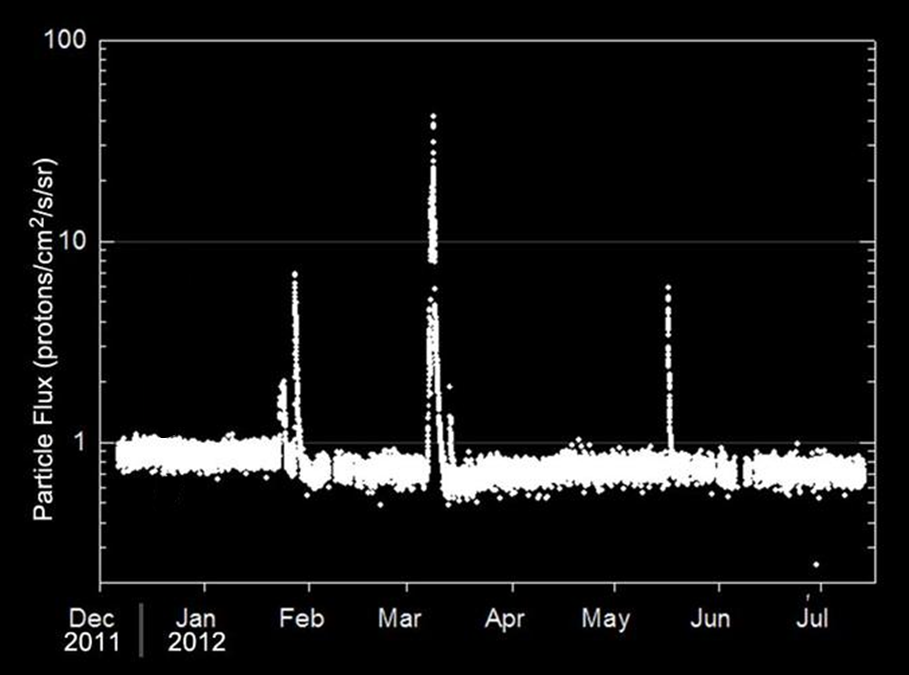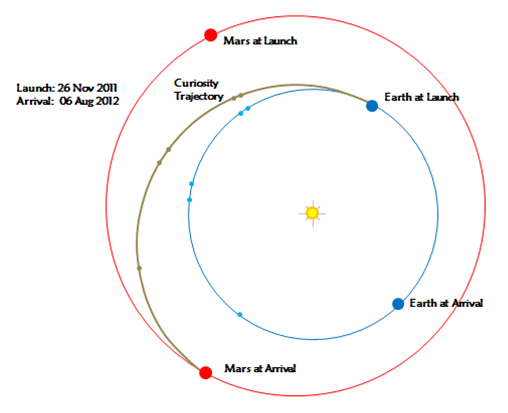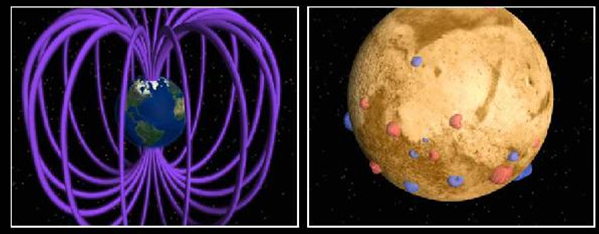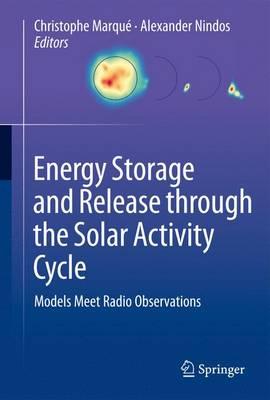
The Solar-Terrestrial Centre of Excellence (STCE) is a collaborative network of the Belgian Institute for Space Aeronomy, the Royal Observatory of Belgium and the Royal Meteorological Institute of Belgium.
 |
Published by the STCE - this issue : 16 Aug 2012. The Solar-Terrestrial Centre of Excellence (STCE) is a collaborative network of the Belgian Institute for Space Aeronomy, the Royal Observatory of Belgium and the Royal Meteorological Institute of Belgium. |
| Archive of the newsletters | Subscribe to this newsletter by mail |
On August 6th, the Curiosity spacecraft successfully touched down on the Red Planet after a journey lasting nearly 8.5 months. During its trip, the onboard RAD-instrument (Radiation Assessment Detector) measured systematically the number of energetic particles to get an idea of the radiation hazard to which future astronauts en route to Mars might be exposed. Indeed, when such a time comes, astronauts will have to leave the safe cocoon of the Earth's magnetosphere, being fully and for a long time exposed to the incessant bombardment of energetic particles from the Sun, galactic cosmic rays and other sources. So, it comes as no surprise that scientists want to understand a little bit better the circumstances in which the future astronauts will have to venture.

A few days prior to the landing, scientists from NASA/JPL released the graph above displaying the results from these radiation measurements taken during Curiosity's journey to Mars (http://mars.jpl.nasa.gov/msl/multimedia/images/?ImageID=4074 ). It can readily be seen that the spacecraft was hit a couple of times by proton flares, i.e. clouds of fast moving energetic particles sometimes ejected during powerful eruptions on the Sun. Could the measured peaks in proton numbers be traced back to proton flares observed here on Earth? The peaks apparently correspond to solar events on 23 and 27 January, 7 and 13 March, and 17 May. The schematic underneath shows the position of Mars, Earth and Curiosity's trajectory, with all three moving in a counter-clockwise direction around the Sun. The small blue and brown dots indicate the position of the Earth and the Curiosity probe on the aforementioned dates. There seems to be a really good correspondence, except perhaps for the 17 May event.

This seems to be confirmed when studying additional details of these proton events (see the NOAA/SWPC-page at http://www.swpc.noaa.gov/ftpdir/indices/SPE.txt ). Seen from Earth, the 17 May event took place at the western solar limb, meaning that the flare was invisible from Curiosity's field of view! Yet, it is certainly not impossible that the three were still connected, even if the eruption took place far on the backside of the Sun (as seen from Curiosity). This was demonstrated as recently as 23 July: Sunspot region NOAA 1520 had already crossed the solar limb for 3 days when it produced a very strong flare of which a small proton signature was still observed here at Earth (see previous STCE Newsletter at http://stce.be/news/152/welcome.html )!

Above table summarizes the main characteristics of the flares: timing, sunspot region (NOAA numbering), flare strength (all Medium and eXtreme flares), and location (distance to central meridian of the Sun: East is to the "left", West is to the "right"). Also mentioned are the number of particles measured by the GOES-13 spacecraft (in orbit around Earth) for medium (red) and high (green) energy levels, as well as the numbers measured by the RAD-experiment (blue). The medium energy levels are very important, as they are usually used to determine if a flare is a proton event or not, and how strong it is. However, at first glance, these low-energy peak values do not correspond well to the ones measured by RAD. This is because also RAD can observe protons at different energy levels (http://mslrad.boulder.swri.edu/instrument.html ), and the ones displayed in the graph are from the higher energy levels. Then, comparing apples (RAD high energy protons) with apples (GOES-13 high energy protons), the peak values correspond much better.
After May 17th, 6 other proton events were registered at Earth, but they were either much smaller than the previous ones, or the position of the source region did not favor a good magnetic connection with the Earth and Curiosity. Hence, no trace of these events can be seen in the RAD-data.

The RAD-instrument now continues to make measurements of the energetic particle radiation on Mars. Indeed, this planet does not possess a nice protective magnetic cocoon similar to Earth's. Instead, it seems to be composed of local magnetic fragments (bubbles) scattered all over the Martian surface, thus providing very little protection (see schematic of the respective magnetic fields above - http://www.nasa.gov/mission_pages/msl/multimedia/hassler02.html ).
"The RAD website (http://mslrad.boulder.swri.edu/ ) will eventually show near-real-time observations of the radiation environment on the surface of Mars, sort of a daily 'Space Weather at Mars' update," said Donald Hassler, principal investigator (PI) of the RAD-team. The first results are already available at http://www.nasa.gov/mission_pages/msl/multimedia/pia16020.html (see also image underneath), showing that the radiation levels at Mars are currently about half of what was measured during Curiosity's cruising stage to Mars. Hence, Curiosity's measurements provide very valuable data for future (manned) Mars explorations.

Christophe Marqué (STCE, Belgium) and Alexander Nindos (University of Ioannina, Greece) are the editors of the book publication 'Energy Storage and Release through the Solar Activity Cycle - Models meet radio observations'. It is the Topical Issue that follows the 2010 CESRA meeting in La Roche, Belgium. The Community of European Solar Radio Astronomers (CESRA) organizes triennial workshops on investigations of the solar atmosphere using observations at radio and other wavelengths.
The Topical Issue is not limited to only results presented in the CESRA 2010 workshop but reflects also on general submissions on the core topics.

Eleven sunspot groups were reported during the week by NOAA (Catania data was not available), and five of them produced numerous C-class flares: NOAA ARs 1536, 1538, 1540, 1542, and 1544. The strongest flare of the week (M1.6 on August 6) occurred in the NOAA AR 1542 when it was at the south-east solar limb. The second M-class flare (M1.0) occurred in the NOAA AR 1540 on August 11. No flare was accompanied by an Earth-directed CME or a solar energetic particle event.
A partial halo CME was first detected in the LASCO C2 field of view at 11:48 UT on August 10. According to the STEREO data, this was a far-side CME.
During the most of the week the Earth was situated inside a slow solar wind flow, and geomagnetic conditions were quiet, except one interval of active (K = 4) conditions on August 6 reported by Dourbes (NOAA and IZMIRAN K-index remained below 4 during this time).
Late on August 7 the Earth entered an interplanetary disturbance most probably associated with the halo CME detected on the Sun on August 4. The interplanetary magnetic field magnitude was elevated only slightly, so both Dourbes and NOAA reported only one interval of K = 4, and IZMIRAN reported one interval of minor storm conditions (K = 5). After that the Earth was inside a slow solar wind flow again, and the geomagnetic conditions were quiet.
| DAY | BEGIN | MAX | END | LOC | XRAY | OP | 10CM | TYPE | Cat | NOAA | NOTE |
| 6 | 0433 | 0438 | 0441 | S14E88 | M1.6 | 84 | III/3 V/2 IV/1 II/1 | 1542 | Location reported by SolarSoft Latest Events | ||
| 11 | 1155 | 1220 | 1257 | S28W38 | M1.0 | 2N | 0 | 1540 |
| LOC: approximate heliographic location | TYPE: radio burst type |
| XRAY: X-ray flare class | Cat: Catania sunspot group number |
| OP: optical flare class | NOAA: NOAA active region number |
| 10CM: peak 10 cm radio flux |